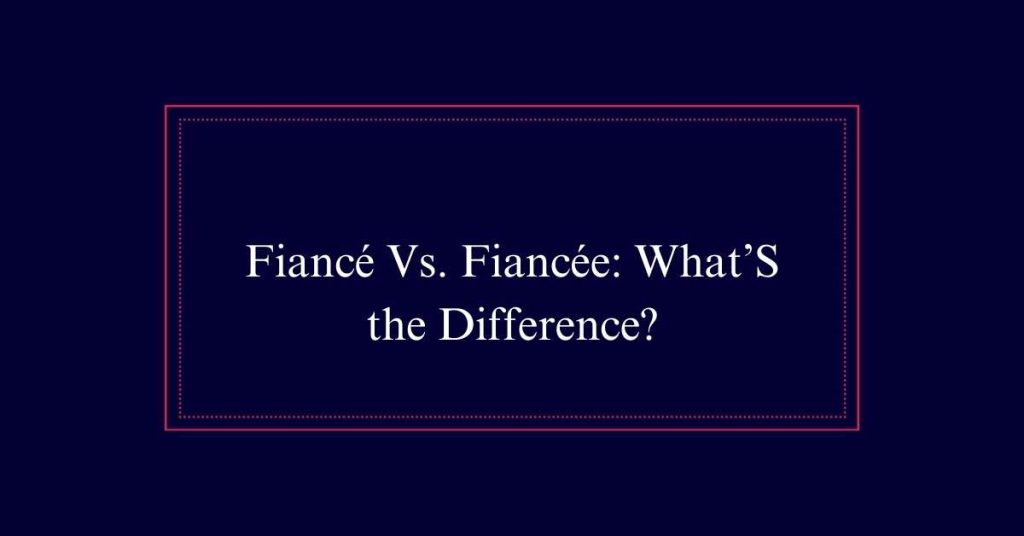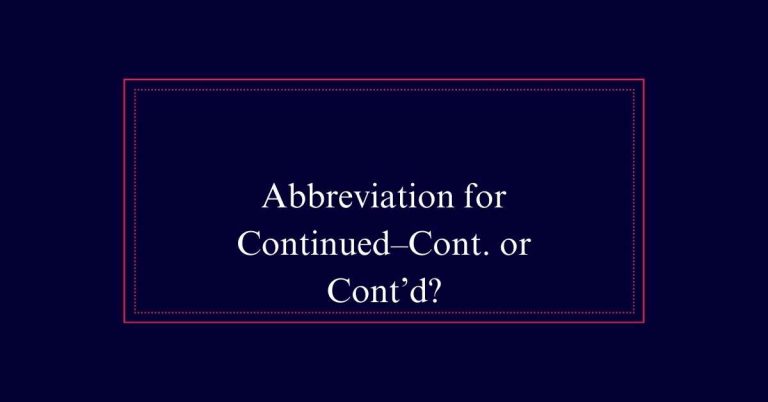Fiancé Vs. Fiancée
The terms ‘fiancé’ and ‘fiancée’ both denote someone engaged to be married, but they are gender-specific. ‘Fiancé’ refers to a man, while ‘fiancée’ refers to a woman. These terms originate from the French verb ‘fiancer,’ meaning to promise, and entered English in the mid-19th century. Pronounced the same as “fee-ON-say,” the difference lies in spelling, with the extra ‘e’ denoting the feminine form.
Origin of the Terms
The terms ‘fiancé’ and ‘fiancée’ originate from the French verb ‘fiancer,’ which means to promise. This verb captures the essence of a commitment made between two people who intend to marry.
The word was adopted into English in the mid-19th century, reflecting the romantic connotations associated with French language and culture. In English, ‘fiancé’ and ‘fiancée’ specifically denote a man and a woman, respectively, who are engaged to be married.
These terms are part of a broader tradition in which English borrowed words from French, particularly those relating to love and relationships. The use of ‘fiancé’ and ‘fiancée’ underscores a promise of future union, marking a formal step towards marriage.
Gender Distinctions in French
French language often distinguishes gender through specific word endings. For example, “fiancé” refers to a man engaged to be married, while “fiancée” indicates a woman. This distinction is achieved by adding an “e” at the end for the feminine form. Other French words follow similar patterns to indicate gender differences. Below is a table illustrating some common examples:
| Masculine | Feminine | Translation |
|---|---|---|
| fiancé | fiancée | engaged |
| acteur | actrice | actor |
| cousin | cousine | cousin |
| lion | lionne | lion |
| étudiant | étudiante | student |
Understanding these endings helps in recognizing and using gender-specific terms correctly. This gender distinction enriches the language’s expressiveness.
Pronunciation Guide
Recognizing gender distinctions in French words becomes easier with an understanding of their pronunciation. Both ‘fiancé’ and ‘fiancée’ are pronounced identically: fee-ON-say. The pronunciation does not change with the gender distinction.
The key difference lies in the spelling, with ‘fiancée’ having an extra “e” to indicate a female. In French, this additional “e” is a common marker for feminine forms of words. While the pronunciation is the same, knowing the spelling helps differentiate between a man and a woman engaged to be married.
Common Usage Examples
When discussing the terms ‘fiancé’ and ‘fiancée,’ it’s helpful to look at examples from literature and everyday conversation. These terms are often used to convey the engaged status of a couple, with ‘fiancé’ referring to a man and ‘fiancée’ to a woman.
Here are some common usage examples:
- In classic literature, a character might say, ‘My fiancé will join us shortly.’
- During a wedding planning meeting, one might hear, ‘The fiancée has chosen her dress.’
- In casual conversation, a friend might declare, ‘I can’t wait to meet your fiancé!’
These examples show how the terms are used to specify gender and engagement status in various contexts.
Language of Love
The terms ‘fiancé’ and ‘fiancée’ not only highlight engagement status but also reflect the romantic and melodic nature of the French language. French is often considered the language of love due to its soft syllables and flowing words.
Words like ‘amorous,’ ‘ardent,’ and ’embrace’ are borrowed from French, enhancing English with their romantic connotations. The gender-specific endings in ‘fiancé’ and ‘fiancée’ add a touch of elegance and specificity.

Despite the identical pronunciation, the additional ‘e’ in ‘fiancée’ helps distinguish the gender of the betrothed. This subtle nuance contributes to the poetic quality of the language, making French terms particularly cherished in romantic contexts.
Synonyms and Alternatives
Synonyms for ‘fiancé’ and ‘fiancée’ include terms like ‘beloved’, ‘betrothed’, and ‘promised’. These words can be used interchangeably to describe someone engaged to be married.
While ‘fiancé’ and ‘fiancée’ specifically denote gender, these alternatives provide more neutral options.
Here are some helpful alternatives:
- Beloved: A term denoting deep affection and love.
- Betrothed: A more formal term indicating engagement.
- Promised: Emphasizes the commitment aspect of the relationship.
These synonyms can simplify communication, especially in writing where gender may not be relevant. Using these alternatives can also avoid confusion for those unfamiliar with the gender-specific endings of ‘fiancé’ and ‘fiancée’.
Borrowed Words in English
Many English words, including fiancé and fiancée, are borrowed from French. These terms derive from the French verb meaning ‘to promise.’
In English, borrowed words often retain their original gender distinctions, as seen in fiancé for a man and fiancée for a woman. This practice is not unique to these words; many French words in English maintain gender-specific endings, such as blond and blonde.
Additionally, French contributes many love-related words to English, like amorous and ardent. Although these words have been integrated into English, they preserve their French roots, enriching the language with nuanced meanings and romantic connotations.
Understanding these borrowed words enhances our appreciation of linguistic diversity.
What is the difference between “fiancé” and “fiancée”?
The main difference between “fiancé” and “fiancée” lies in their gender. Fiancé is used to refer to a male engaged to be married, while fiancée is for a female. Keeping this distinction in mind is crucial when addressing your future spouse, a point to consider in any advisor or adviser comparison.
Gender-Neutral Language
In recent years, there has been a growing movement towards gender-neutral language in English. This trend aims to make communication more inclusive and reflective of diverse identities. Traditional terms like ‘fiancé’ and ‘fiancée’ specify gender, which may not align with everyone’s preference. As a result, some prefer using gender-neutral alternatives.
- Usage: Terms like ‘partner’ or ‘betrothed’ are becoming more common.
- Inclusivity: Gender-neutral language respects all gender identities.
- Language Evolution: English is adapting to cultural shifts.
These changes highlight the evolving nature of language in response to social progress. While ‘fiancé’ and ‘fiancée’ remain in use, the push for gender neutrality offers more inclusive options for those who prefer them.






